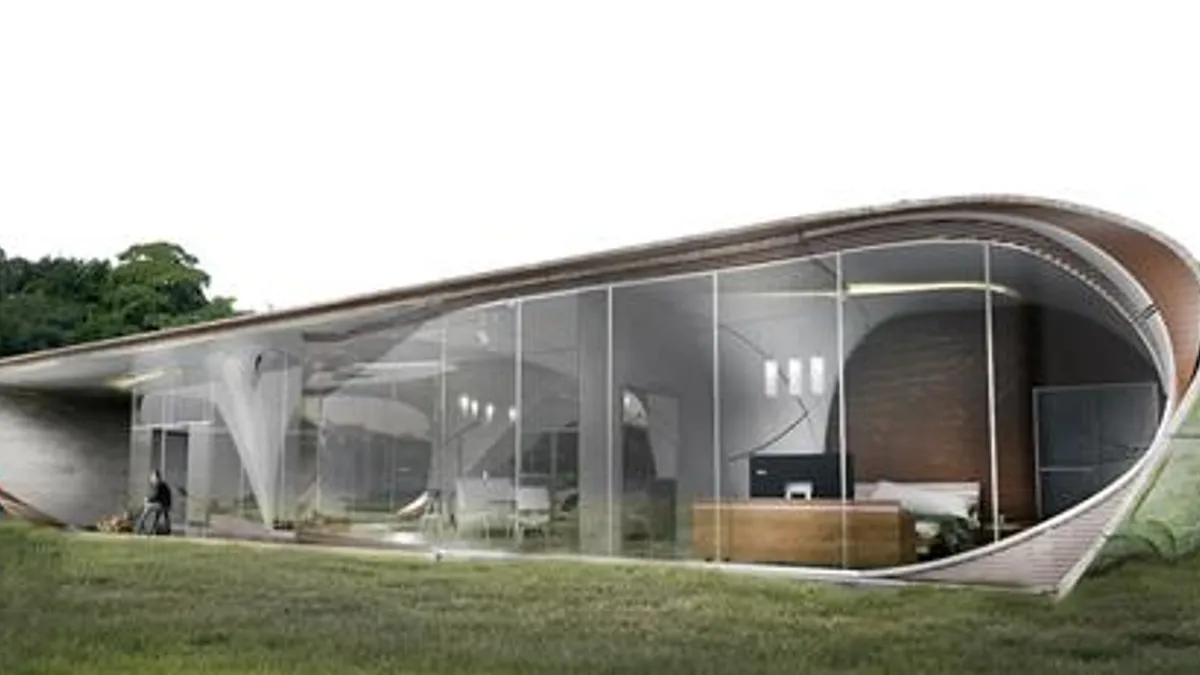Dive Brief:
- Tennessee construction tech firm Branch Technology expects to break ground soon on what it claims is the world’s first free-form, 3D-printed house and is planning to deliver the project before the end of the year, The Architect’s Newspaper reported.
- Architectural firm Wimberly, Allison, Tong & Goo's Curve Appeal design won Branch's 2016 Freeform Home Design Challenge, which invited firms to submit proposals for a house made with Branch’s C-FAB (cellular fabrication) technology. Curve Appeal will be built on a lot in Chattanooga, Tennessee, and crews will use approximately 100 pieces of printed carbon-fiber-reinforced ABS thermoplastic in construction of the net-zero-energy structure’s “lattice-like matrix.” Materials like gypsum composite, spray foam or concrete can then be added, increasing structural capacity and energy efficiency.
- Branch has doubled its equipment inventory with four new printers and is building a factory to accommodate the latest in automation. The company has already 3D-printed furniture, drone landing pads and the SHoP Pavilion made for 2016’s Design Miami festival.
Dive Insight:
The year Branch held its design competition was a big year for other 3D projects as well, particularly in Dubai, where government officials debuted the world's first fully functional 3D-printed office. Almost everything in the 2,000-square-foot structure was 3D printed — even the furniture — and construction took only 17 days using a 20-foot-high, 120-foot-long, 40-foot-wide printer with a robotic arm.
That same year, Dubai announced another ambitious 3D-printing initiative. The government's stated construction-related goals are that, by 2025, every new building in Dubai will be 25% 3D printed. For 2019, the goal is for 2% of new structures to utilize the technology, with gradual percentage increases to follow.
The U.S. military has made solid strides in 3D printing as well, with more than one project with practical applications already complete.
In August, the Marine Corps Systems Command Advanced Manufacturing Operations Cell (AMOC) and its Automated Construction of Expeditionary Structures (ACES) 3D printer built a 500-square-foot barracks building in roughly 40 hours. That could have been reduced to 24 hours, said Capt. Matthew Friedell, AMOC project officer, if they had used a robot to mix and pump concrete, perhaps hinting at a future investment.
The Marines recently 3D printed a concrete pedestrian footbridge during a logistics exercise at Camp Pendleton in California. This was the first time in the Western Hemisphere that a bridge like this was 3D printed in the field rather than in a controlled, factory setting. The military hopes to use 3D printing for operational projects as well as humanitarian efforts.












